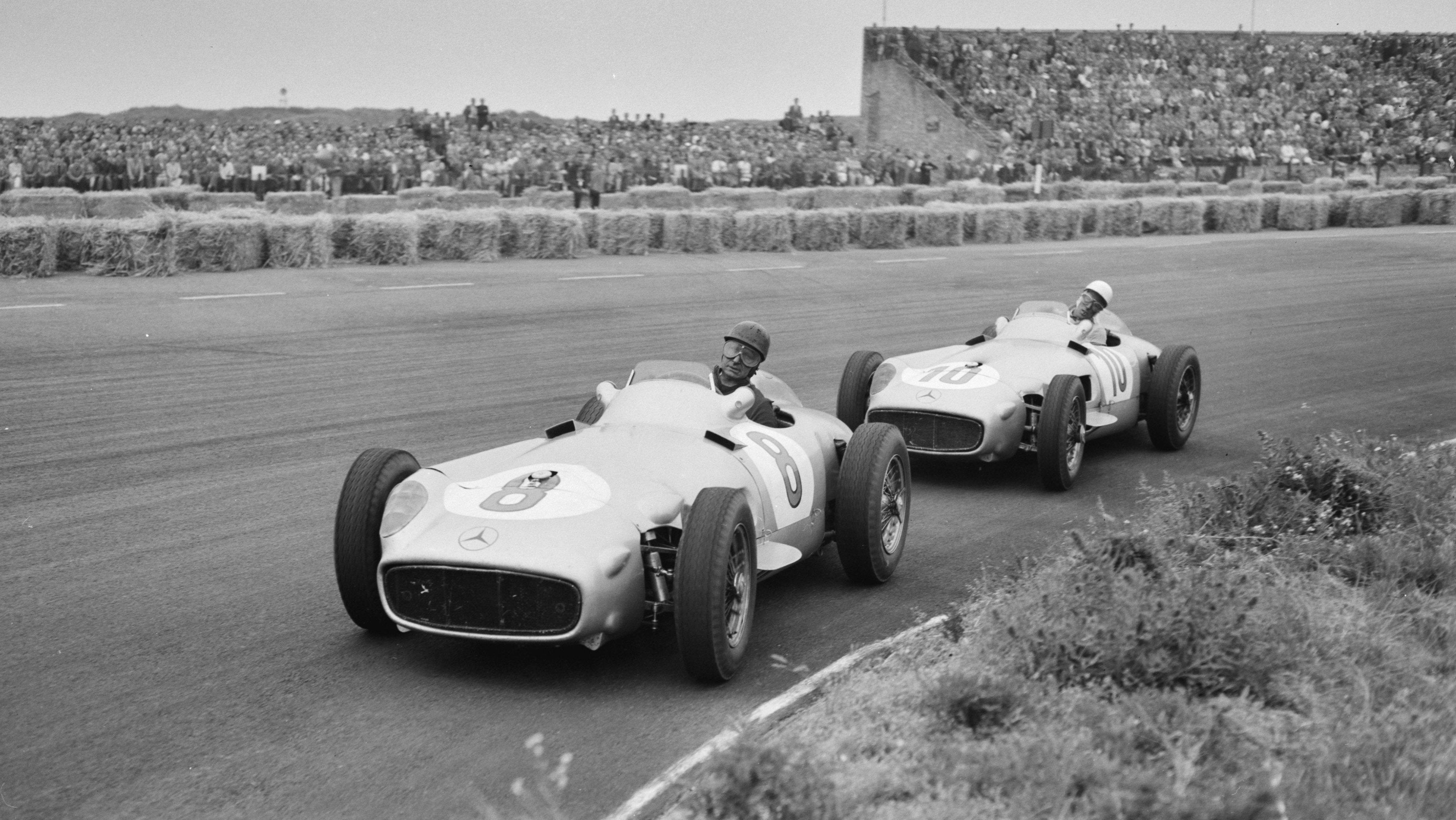1950s Mercedes F1 Car Becomes Most Expensive Grand Prix Machine Sold At Auction, Second-Most Expensive Car Ever
The streamlined Mercedes-Benz W196 R was donated to the Indianapolis Motor Speedway Museum in 1965
History is priceless only if no one can afford it or it's not for sale. The first publicly-available 1954 Mercedes-Benz W196 R Stromlinienwagen sold for $53.9 million at auction on Saturday after spending decades in the hands of the Indianapolis Motor Speedway Museum. The streamlined Mercedes became the most valuable Grand Prix car ever sold. Among all cars sold, the 1950s F1 machine is only second to the Mercedes-Benz 300 SLR Uhlenhaut Coupé, which sold for $143 million in 2022.
The Mercedes-Benz W196 R was the dominant car that won two F1 world championships during the German automaker's brief two-year stint in the mid-1950s. The W196 R's most striking feature was its two different bodywork configurations: a traditional open-wheel kit and a closed-wheel streamlined kit. F1 didn't prohibit covering wheels at the time, and Mercedes believed that the increased straight-line speeds were worth the added weight. RM Sotheby's explained:
The streamlined body, in contrast, was something truly unique. Low and wide, its smoothly curved coachwork featured minimal frills, being chiefly distinguished by a wide open-mouth grille, cooling inlets on the rear shoulder haunches, and molded character lines across the tops of the front wheel wells (a design cue that came to be characteristic across the 300 SL model line, lending a marvelous continuity among the marque's sports-racing cars). This was undoubtedly one of the most exquisite expressions of curve and stance ever pounded out, rivalling the most sensuous sports-racers and supercars for sheer visual appeal.
These streamlined bodies were built in extremely limited quantity by the racing department out of Elektron magnesium alloy, providing a shell even lighter than aluminum for a total weight of just over 88 pounds. The open-wheel bodies were also made of lightweight alloy, although coachwork production later shifted to steel bodies built at Sindelfingen.

Mercedes debuted the W196 R at the 1954 French Grand Prix. The car was fitted with a 257-horsepower inline-eight engine and could reach speeds of 186 miles per hour. However, the lightweight Elektron bodywork would play a role in shuttering the Mercedes-Benz racing department the following year. After a Mercedes-Benz 300 SLR crashed into the crowd at the 1955 24 Hours of Le Mans, emergency workers struggled to extinguish the burning magnesium debris.
The W196 R sold, chassis number 00009/54, was driven to victory in the 1955 Buenos Aires Grand Prix by hometown hero and five-time F1 champion Juan Manuel Fangio. According to RM Sotheby's, the car was fitted with streamlined bodywork later that season after Fangio and Stirling Moss found their shorter wheelbase W196 too twitchy on Monza's steep banking. Moss drove the sold car during the Italian Grand Prix. He failed to finish due to a piston failure but recorded the race's fastest lap.
After Mercedes-Benz withdrew from racing after the 1955 season, its racing cars were put into storage. A factory visit by a delegation from the Mercedes-Benz Club of America convinced the automaker to donate chassis number 00009/54 to the Indianapolis Motor Speedway Museum in 1965. The donation symbolized the relationship that Mercedes wanted to have with Indianapolis. The German manufacturer wins at the Indy 500 before and after 1955 have come from privateers and constructors. There has never been a Mercedes factory team in the Greatest Spectacle in Racing.
